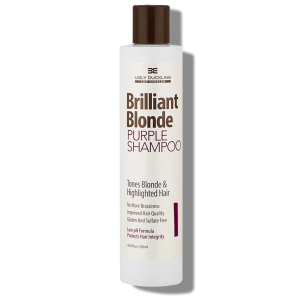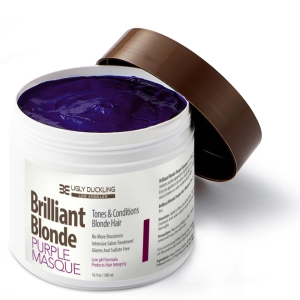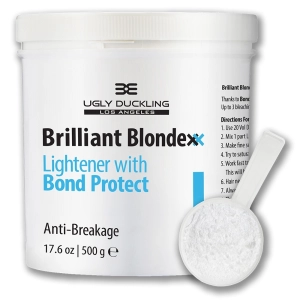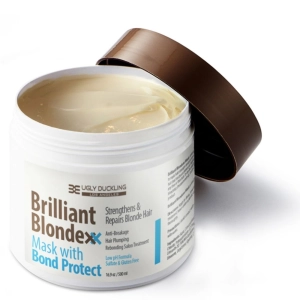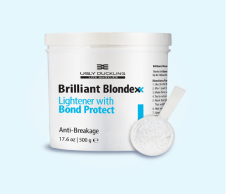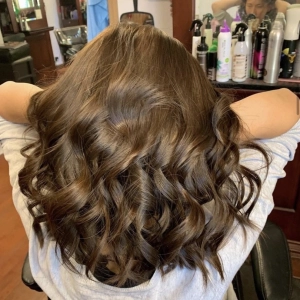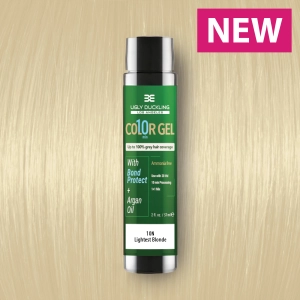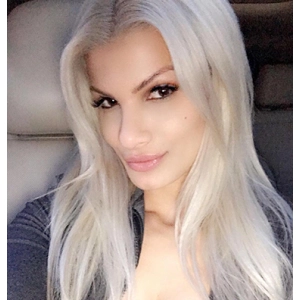BY SALLY MADISON
NATIONAL COLOR TRAINER
What is the Bleach and Tone Technique?
The bleach and tone technique is a hair coloring method that involves lightening the hair using bleach and then applying a toner to achieve the desired shade. It is a versatile technique that can be used to create a range of hair colors, from platinum blondes to pastel hues.
Bleaching is the process of removing the natural or existing color from the hair strands, making them lighter. This is achieved by using a mixture of bleach powder and developer, which breaks down the melanin pigments in the hair. The toner, on the other hand, is what you use to finish your look, neutralize any unwanted brassy or yellow tones and create an even and consistent desired shade from roots to ends.
The bleach and tone technique is commonly used for achieving light shades on dark hair, correcting uneven color, or preparing the hair for vibrant fashion colors. It requires careful application and knowledge of hair color theory to achieve the desired results. By understanding the fundamentals of this technique, you can ensure successful outcomes and minimize the risk of damage to your hair.
In the following sections, we will explore the reasons why individuals choose the bleach and tone technique, its benefits, who it is suitable for, and the potential drawbacks and risks associated with the process. By gaining a comprehensive understanding of this technique, you will be better equipped to make informed decisions and achieve the hair color of your dreams.
Why Choose the Bleach and Tone Technique
The bleach and tone technique offers several advantages that make it a popular choice for individuals seeking a dramatic hair color transformation. In this section, we will explore the benefits of choosing the bleach and tone technique, discuss who it is suitable for, and also touch upon any potential drawbacks and risks associated with the process.
Benefits of Bleach and Tone
Achieve Light Shades: The bleach and tone technique is highly effective in lightening dark hair and achieving light shades, such as platinum blonde or pastel colors. It allows for a significant color transformation, giving you the opportunity to explore a wide range of vibrant and unique looks.
Correct Uneven Color: If you have previously dyed your hair and ended up with uneven or brassy tones, the bleach and tone technique can help correct these issues. By lightening the hair with bleach and applying a toner, you can neutralize unwanted tones and create a more even, cohesive color.
Preparation for Fashion Colors: If you're planning to experiment with vibrant fashion colors, the bleach and tone technique is often a necessary step. By lightening the hair first, you create a blank canvas that allows the fashion colors to appear more vivid and true to their intended shade.
Customizable Results: The bleach and tone technique offers a high level of customization. By adjusting the level of bleach and the toner used, you can achieve a wide variety of shades and intensities. This allows for personalization and tailoring the color to your individual preferences.
Using Bond Protect Bleach to Protect Hair & Scalp
Bleaching can cause damage to the hair, as it strips away the natural pigments and can weaken the hair strands. It is important to take proper precautions and follow a strict hair care routine to minimize damage and maintain the health of your hair.
- This is where the use of a quality bleach is really key. In this tutorial we use Brilliant Blondexx, a bleach which contains maleic acid. This acid, otherwise known as Bond Protect, helps prevent hair breakage during the bleaching process. It also protects the scalp and prevents itching and burning sensations while bleaching.
At the same time, it does not slow down the bleaching process. As a result, you can get up to 7 levels of lift on the root area, and transform even a very dark root into level 10 blonde.
Allergic Reactions: Some individuals may be allergic to the chemicals present in bleach or toners. It is important to perform a patch test before applying any products to the entire head to check for any adverse reactions.
By understanding the benefits, suitability, and potential risks associated with the bleach and tone technique, you can make an informed decision and ensure a successful and safe hair coloring experience.
How to Prepare for a Bleach and Tone
Hair Health: Assess the overall health of your hair. If your hair is already damaged, brittle, or excessively dry, it may not be suitable for bleaching. In such cases, it is advisable to focus on nourishing and repairing your hair before attempting any drastic color changes.
Previous Treatments: Take note of any recent chemical treatments or processes your hair has undergone, such as relaxers, perms, or previous dye applications. These treatments can affect the hair's ability to withstand the bleach and tone process.
Natural Hair Color: Determine your natural hair color. The starting point of your hair color will affect the level of bleaching required to achieve the desired shade. Darker hair colors may require multiple bleaching sessions to reach the desired lightness.
- Hair is best unwashed for several days prior to bleaching. The build up of natural oils will protect both the scalp and the hair during the bleaching process
Necessary Supplies
To prepare for a bleach and tone session, ensure you have the following supplies on hand:
Brilliant Blondexx bleach: This is a product that is gentle on the hair and offers controlled lift at the same time.
Developer: Select the appropriate volume of developer based on your hair's starting level and the desired level of lightness. 20 Vol or 30 Vol are what we generally use.
Toner: Toners come in various shades, including ash, beige, and silver, and are used to neutralize unwanted tones. In this tutorial we use Pearl Blonde toner 10V
Gloves: Use disposable gloves to protect your hands from the harsh chemicals present in the bleach and toner.
Mixing Bowl and Brush: These tools are necessary for preparing and applying the bleach and toner mixture to your hair.
Sectioning Clips: Sectioning clips will help divide your hair into manageable sections during the application process.
Hair Care Products: Purchase a deep conditioning treatment or hair mask to nourish and hydrate your hair after the bleach and tone process. Ideally, your haircare products should be sulfate-free and also acidic. This will ensure that the hair is returned to its normal state and the cuticles are closed. All Ugly Duckling hair products are sulfate-free and acidic.
Step-by-Step Guide to the Bleach and Tone Technique
The bleach and tone technique requires careful execution to achieve the desired hair color while minimizing damage. In this section, we will provide a step-by-step guide to help you navigate through the process effectively.
1. Applying the Bleach
Prepare the Bleach Mixture: Follow the instructions provided with the bleach powder and developer to create the bleach mixture. Mix them in a non-metallic bowl, ensuring a smooth and consistent texture.
Section your Hair: Divide your hair into manageable sections using sectioning clips. Start at the back and work your way up to the front, ensuring that each section is evenly distributed.
Protect Your Skin: Apply a barrier cream or petroleum jelly along your hairline, ears, and neck to protect your skin from the bleach.
Begin the Application: Starting from the bottom section, use a brush to apply the bleach mixture to the hair strands, starting about half an inch away from the roots. Work your way up to the roots, ensuring even coverage. Avoid overlapping the bleach onto previously bleached hair.
Repeat for Each Section: Continue applying the bleach mixture to each section of your hair, working systematically until all sections are covered.
Processing Time: Follow the recommended processing time provided with the bleach product. Keep an eye on the hair color during the process to monitor the lightening progress. It's important not to exceed the recommended processing time to avoid overprocessing and hair damage.
2. Rinsing and Drying
Check for Desired Lightness: Once the processing time is complete, check the color of your hair. Rinse a small section to assess the level of lightness achieved. If you are satisfied with the color, proceed to rinse the entire head. If not, you may need to repeat the bleaching process after giving your hair sufficient time to rest and recover.
Rinse with Lukewarm Water: Thoroughly rinse the bleach out of your hair using lukewarm water. Make sure to remove all traces of bleach to prevent any chemical reactions with the toner.
Shampoo and Condition: Gently shampoo your hair using a sulfate-free shampoo formulated for color-treated hair. Follow with a moisturizing conditioner to restore hydration and nourishment to your hair.
Towel Dry: Pat your hair dry with a soft towel, being careful not to rub vigorously as this can cause breakage. Leave your hair slightly damp for the next step.
3. Applying the Toner
Prepare the Toner: Mix the toner according to the instructions provided. Use a non-metallic bowl and brush for accurate measurement and application.
Section your Hair: Divide your hair into sections using the same technique as before, ensuring even distribution of the toner.
Apply the Toner: Starting from the roots, apply the toner to each section using a brush. Work the toner down to the ends, saturating the hair evenly. Make sure to follow the recommended processing time for the toner.
Rinse and Condition: Once the processing time is complete, rinse your hair with cool water until the water runs clear. Apply a deep conditioning treatment or hair mask to restore moisture and nourish your hair.
4. Final Rinse using Purple Shampoo & Purple Mask
Final Rinse: Rinse your hair one final time with cool water to ensure all product residues are removed.
Purple Shampoo & Mask: At any stage during the bleach and tone process, you can consider toning the hair with Purple Shampoo and Mask. This will help reduce unwanted yellow and also help you arrive at a consistent tone.
By following these step-by-step instructions, you can successfully execute the bleach and tone technique. Remember to be cautious and patient throughout the process, taking necessary precautions to minimize damage and maintain your hair's health.
Maintaining Your Bleached and Toned Hair
Once you have achieved your desired bleach and tone hair color, it's essential to maintain its vibrancy and health. In this section, we will discuss the key aspects of maintaining your bleached and toned hair, including recommended hair care products, frequency of toning, and when to seek professional assistance.
Recommended Hair Care Products
Brilliant Blondexx Shampoo and Mask: Invest in a sulfate-free and acidic shampoo and mask which has specifically been formulated for blonde or highlighted hair. In particular we recommend Brilliant Blondexx shampoo and mask.
Heat Protection: Before using heat styling tools, apply a heat protectant spray or serum to shield your hair from damage caused by high temperatures.
Avoid Chlorine and Saltwater: Chlorine and saltwater can strip the color from your hair and cause it to become dry and brittle. If you plan to swim, protect your hair by wearing a swim cap or applying a leave-in conditioner beforehand.
How Often to Tone
The frequency of toning your hair will depend on various factors, including the desired color, your hair's natural undertones, and the toner used. In general, toning is recommended every 4-6 weeks to maintain a fresh and vibrant color. However, this can vary based on individual hair characteristics and the rate at which your hair grows.
Keep an eye on your hair color and monitor any unwanted brassy or yellow tones. If you notice these tones becoming more prominent, it may be time to schedule a toning session to refresh your color.

